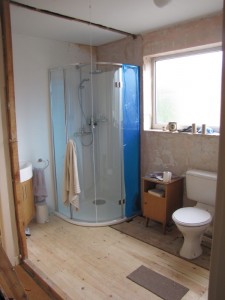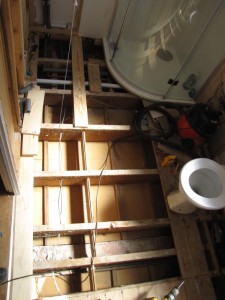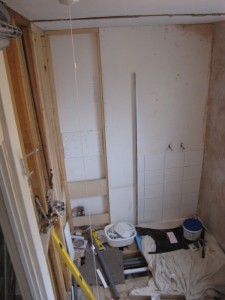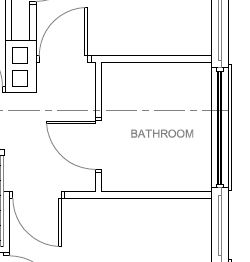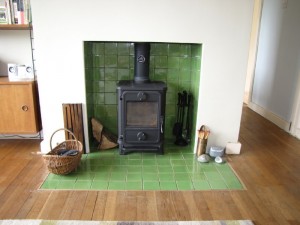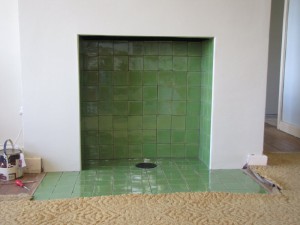We received planning permision back in April, but have been distracted by the wood burner and bathroom installations, not to mention being busy with work. To acheive the energy target, the devil will be in the detail. And there’s a lot of details to do! Every junction and assembly needs detailing, which needs to be done for tender and for Building Regulations approval. I need help! Continue reading
Category Archives: Renovation
how much calculation and modelling?
On of our departures from the Passivhaus, or EnerPHit standard is that we do not plan to spend time doing numerical energy models, such as PHPP, which would be needed for certification. Our only thermal calculations to date have been for thermal bridge analysis, known as Ψ-values, and U-values for determining the thickness and extent of insulation to be used for our walls, floors and roofs, junctions, etc. Our scope is limited by the existing structure and there are elements of work that are not justifiable right now. For example, our roof junctions are a weak thermal point, but the roof is in sound condition. It does not make any economical sense to take it off solely to improve its thermal performance at the eaves and verge. In the time that we plan to live here, there may be a ‘blue moon’ opportunity when we do need to do some major work on the roof and the comparative cost of dealing with the thermal weak points will be <10% of the roof work costs.
bathroom window wall (or sieve)
The toilet has come out, freeing up the remaining floor for re-boarding and the window wall for the rest of the re-plastering. Around the soil and vent pipe (shown) there were huge holes through the inner leaf brick wall, measuring approximately 350 x 150mm – a very significant air leakage path (sorry no photo). Bathrooms and kitchens are key culprit areas for air leakage, particularly over the years as trade plumber after trade plumber make alterations for new appliances, sanitaryware, etc. It is always worthwhile looking for air leakage paths and dealing with them before the new installation goes in. In this case, the hole was infilled with masonry and mortar and plastered over. Continue reading
a not very private bathroom
The first phase of floorboards are in along with the new corner vanity unit. The door needs to be relocated to suit the new bath position. The existing partition wall between bathroom and landing is demolished, ready for the new stud wall and door position. This gives further opportunities to do more air leakage sealing around the wall frame.
the shower is in
Well, the shower is in and working, but now the work continues around it. Probably not the most practical solution, but this is the reality of working in an area that needs to be kept in use. The floorboards have come up as the originals were in poor repair. Also, there was a strip in the floorboards where the original partition was. Continue reading
new bathroom starts shaping up
Have got a bit carried away with building the bathroom over the last few weeks and haven’t done such a good job of recording progress. The bathroom has been extended as the top photo shows (looking toward new wall). Continue reading
next project: bathroom
For a four-bedroom house, the original bathroom dimension is a little on the small side. Accomodating a bath, toilet and vanity basin, there is no room for a seperate shower. The plan is to extend the room by just under a metre, as shown on the plans above, to allow a 900mm quadrant shower cubicle to be fitted. Continue reading
the finished wood burner installation
tiling the wood burner recess
We wanted the hearth to be flush with the surrounding wooden floor (so as not to stub ones toe on as we did with the old hearth). The air grille in the centre of the hearth is a cast iron air brick, sourced from www.castironairbricks.co.uk. Continue reading
choosing the right wood burner
Where to begin! As with many products, once you start googling, it can be quite overwhelming. Simply thousands of woodburners to choose from. Our rationalle was as follows, which helped to narrow our options: Continue reading


